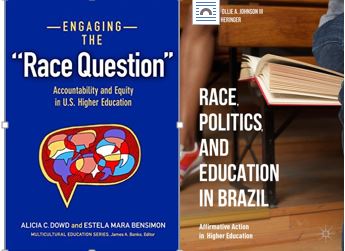Both Brazil and the United States have long histories of slavery, racism, and discrimination. In the United States, slavery formally ended in 1865; however, segregation and discrimination against Black populations continued throughout the 20th century through Jim Crow laws, the “one-drop rule,” de jure segregation, de facto segregation, and institutionalized racism. In Brazil, currently the country with the largest Afro-descendent population outside of Nigeria, slavery only ended in 1888. The racialization of the Brazilian population was also starkly different than the United States, as racial discrimination was denied for decades through the myth of “racial democracy,” promoted by Gilberto Freyre (1933), who argued that racial distinction in Brazil was being erased through miscegenation. Nonetheless, while light- skinned Brazilians embraced the idea of a “racial democracy,” Afro-Brazilians faced acute discrimination in the labor market, housing, and through general social and economic exclusion (Telles, 2004). In the educational sphere, in both Brazil and the United States, these histories of racial discrimination have produced huge gaps in educational access and achievement between white and non-white populations. In higher education, these disparities have been even more extreme. However, the past 15 years has shown a sudden divergence in the politics of race and higher education in these two countries, with affirmative action in the United States increasingly challenged, while in Brazil the federal government has succeed in implementing the most expansive affirmative action policies in the world.



